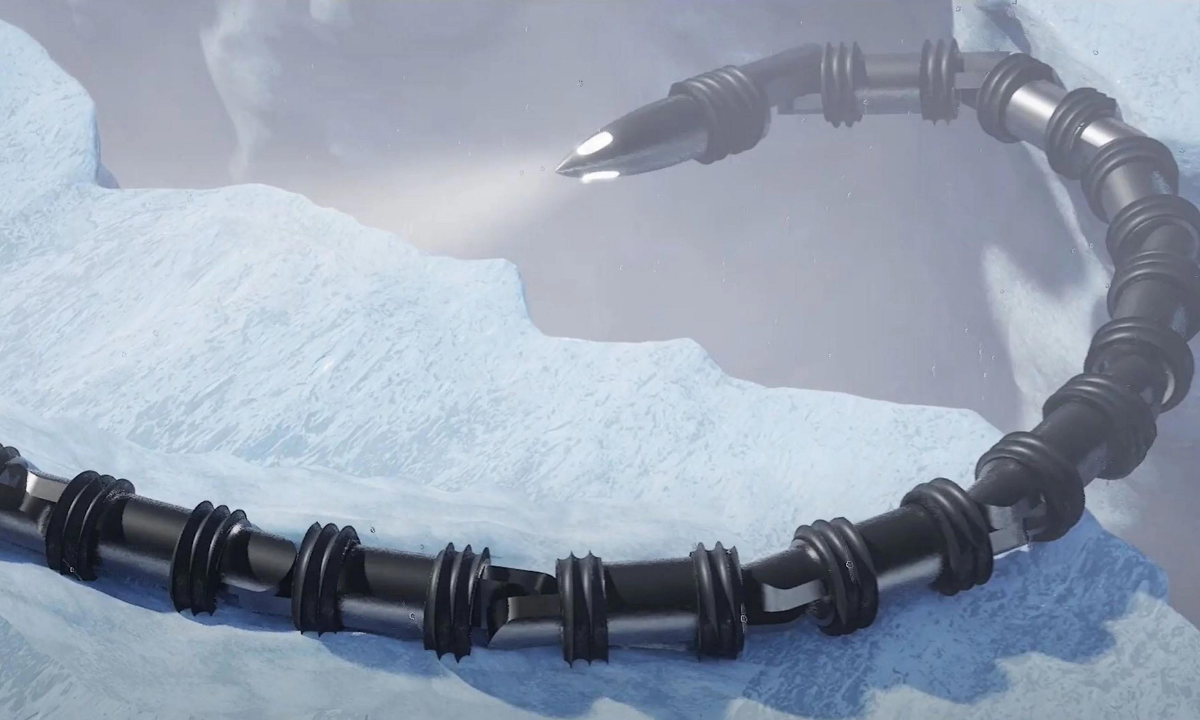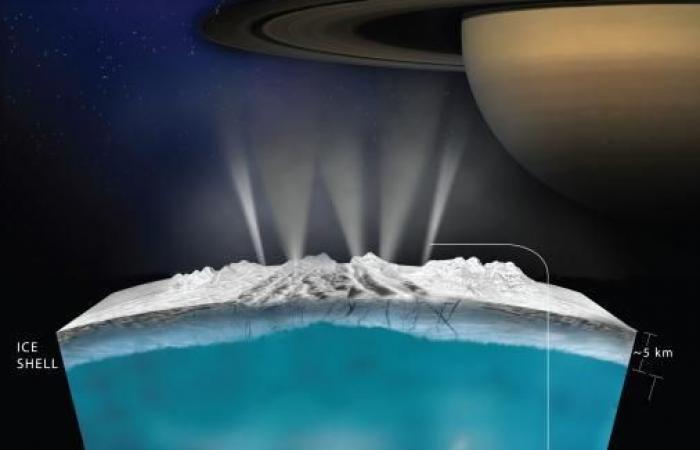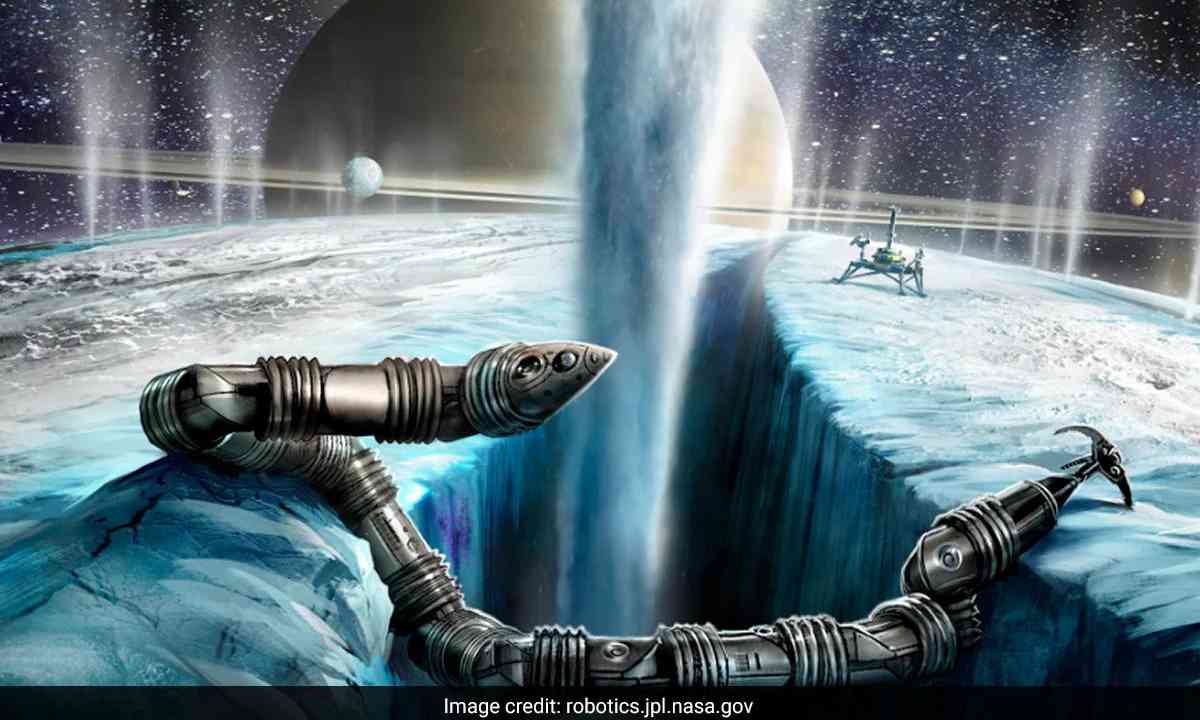A new robot by NASA's Jet Propulsion Laboratory is being prepared for launch into space to help shed light on the centuries-old question of whether life is present elsewhere in the universe beyond Earth.
A snake-like robot called the Exobiology Extant Life Surveyor (EELS) system is used to gather samples while navigating through solid and liquid formations.
''The EELS is a snake-like, self-propelled robot made of multiple, identical, segments containing both the actuation and propulsion mechanisms as well as the power and communication electronics to drive them. EELS uses first-of-a-kind rotating propulsion units that act as tracks, gripping mechanisms, and propeller units underwater, enabling the robot to access a plume vent exit and follow it to its ocean source, '' states a report that describes the robot.

Reaching the surface of Enceladus, one of Saturn's 83 moons, and examining its icy properties is one of the space agency's specified goals.
It is speculated that the icy surface of Enceladus is quite smooth and the temperatures there are more than 300 degrees Fahrenheit below zero according to a voyager spacecraft flyby in the 1980s.
When the moon was orbiting Saturn, NASA's Cassini satellite found that frozen particles were flowing from the moon's surface into space and forming their own ring. These moon surface eruptions provided evidence that a large liquid ocean might be present below the surface.

The EELS team has considered a variety of obstacles when developing this craft that can endure the harsh environment along with the hostile conditions.
According to NASA's Jet Propulsion Laboratory, ''the EELS system is a mobile instrument platform conceived to explore internal terrain structures, assess habitability and ultimately search for evidence of life. It is designed to be adaptable to traverse ocean-world-inspired terrain, fluidized media, enclosed labyrinthian environments, and liquids.''
To test its capabilities, the 16-foot-long robot has been employed to study glaciers and volcanoes.
The EELS project is yet to have a scheduled launch date, therefore the mission is most likely years away.
The space agency claimed that if the mission is successful, it might open up so far unreachable celestial bodies to deeper exploration.
© Copyright 2023. All Rights Reserved Powered by Vygr Media.






















